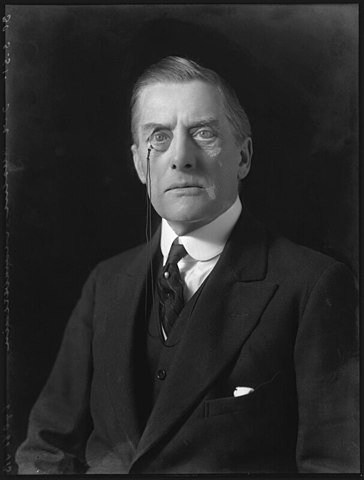Why was Sir Austen Chamberlain Awarded the Nobel Prize for Peace in 1925?
Unveiling the Diplomatic Achievements of a Global Peacemaker
Sir Austen Chamberlain: Architect of Peace Recognized by the Nobel Prize
In 1925, Sir Austen Chamberlain was awarded the Nobel Prize for Peace, a recognition that underscored his significant contributions to international diplomacy and efforts towards global harmony. The prize not only celebrated Chamberlain’s tireless commitment to fostering cooperation and understanding among nations but also acknowledged his pivotal role in shaping the post-World War I world order. This article explores the reasons behind Chamberlain’s Nobel Prize win and highlights the enduring impact of his diplomatic endeavors.

1. Diplomatic Excellence in the Aftermath of World War I
Sir Austen Chamberlain’s pivotal role in the aftermath of World War I played a crucial part in his Nobel Prize win. The war had left Europe devastated and fractured, necessitating a concerted effort to rebuild and establish lasting peace. Chamberlain’s diplomatic skills were instrumental in facilitating negotiations and discussions aimed at resolving the complex issues that emerged from the conflict.
2. Architect of the Locarno Treaties
One of Chamberlain’s most significant achievements was his role in negotiating the Locarno Treaties of 1925. These treaties, signed between Germany, France, Belgium, Italy, and Great Britain, aimed to normalize relations and ensure the demilitarization of the Rhineland. Chamberlain’s dedication to diplomacy and his ability to forge consensus among these nations played a vital role in the successful negotiation of these treaties. The Locarno Treaties were not only symbolic of his diplomatic prowess but also represented a significant step towards European stability.
3. Strengthening International Cooperation
Chamberlain’s diplomatic efforts extended beyond Europe. His commitment to fostering international cooperation was evident in his involvement with the League of Nations, an intergovernmental organization established to promote peace and prevent future conflicts. Chamberlain’s active engagement within the League showcased his dedication to finding diplomatic solutions to global challenges, further enhancing his candidacy for the Nobel Prize.
4. Advocacy for Disarmament
In an era marked by heightened militarization and arms race, Chamberlain was a staunch advocate for disarmament. He believed that reducing the military capabilities of nations would contribute to a more stable and peaceful world. Chamberlain’s unwavering dedication to promoting disarmament efforts resonated with the Nobel Committee, which recognized his commitment to the greater cause of global peace.
5. Legacy and Impact
Sir Austen Chamberlain’s Nobel Prize win in 1925 was a testament to his enduring legacy as a diplomatic trailblazer. His efforts towards resolving international disputes through dialogue and negotiation continue to inspire diplomats and leaders to this day. The recognition of his contributions by the Nobel Committee served as a reminder of the crucial role that diplomacy plays in maintaining international peace and stability.
Sir Austen Chamberlain’s Nobel Prize for Peace in 1925 stands as a testament to his exceptional diplomatic skills, his tireless efforts towards international cooperation, and his unwavering commitment to the cause of global peace. As an architect of the post-World War I world order, Chamberlain’s contributions continue to serve as a source of inspiration for diplomats and leaders working towards a more harmonious and peaceful world. His legacy reminds us that diplomacy, dialogue, and understanding are powerful tools in the pursuit of lasting global stability.




